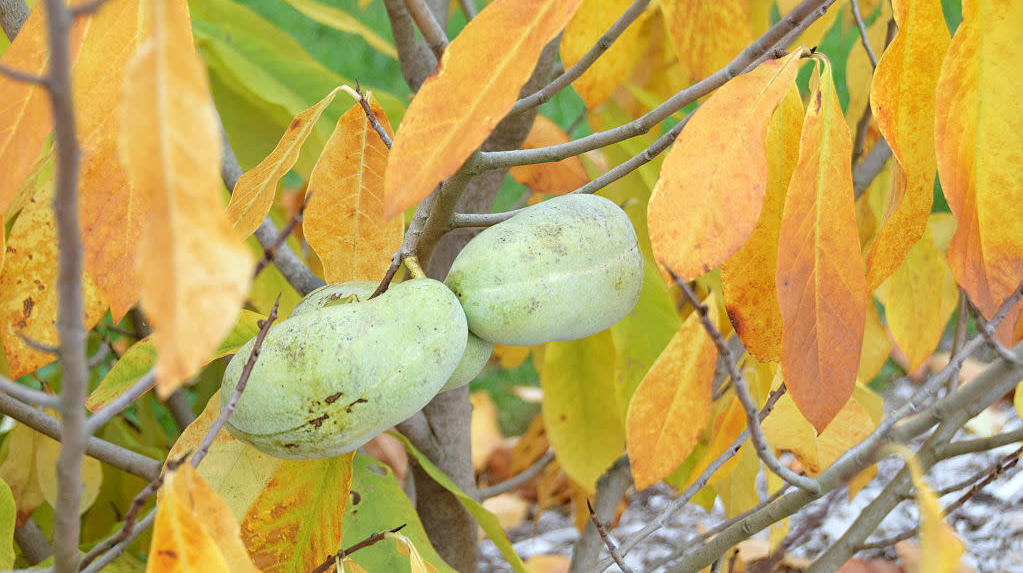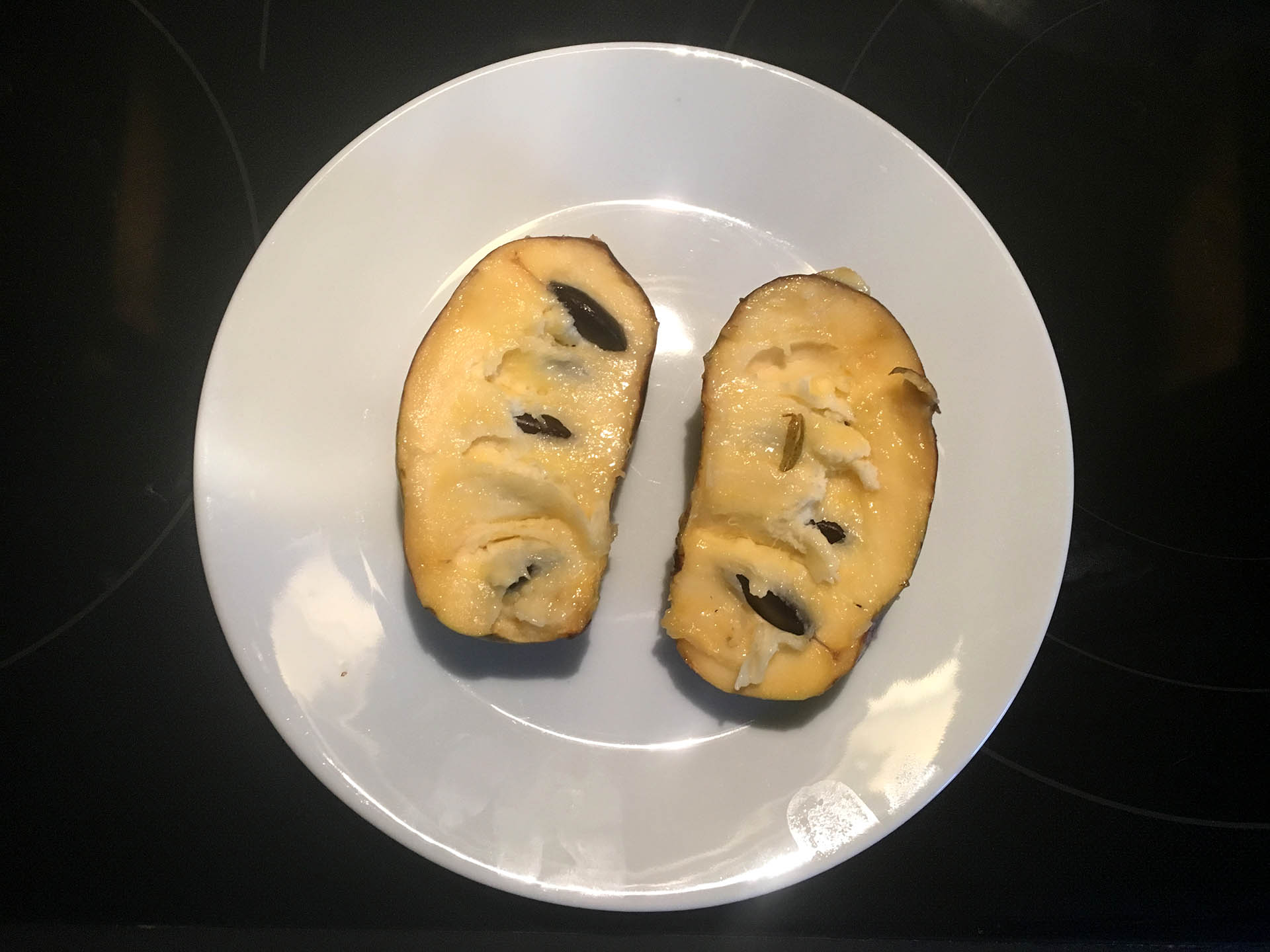On The Trail Of The Pawpaw, An Elusive Fall Treat
It’s rare to find a perfect pawpaw, but if you do, you'll never forget it.
The first time I tasted a pawpaw, it was in gelato made by Zingerman's Creamery in Ann Arbor, Michigan. The flavor was sweet, custardy, and banana-like. I subsequently spotted a basket of pawpaws down a row at the Ann Arbor Farmers Market, but by the time I got to the stand, they were sold out.
This year, I was determined I would track down some pawpaws. But the season ran late: there have been none at the market and Zingerman's has yet to put its pawpaw gelato on sale. So I searched the internet for pawpaw growers, and finally found one in Owosso, Michigan, about an hour from Ann Arbor.
Thing is, I was not alone in my quest.

This fall, pawpaw lovers have flooded Nash Nurseries, the picturesque family farm owned by Bill Nash that is set on 200 rolling acres covered with soaring trees in vibrant oranges, golds, and reds. Eager to get outside during the pandemic, visitors have swooped up nearly his entire fall crop, and also plucked most of the chestnuts he raises in a nearby grove.
"The demand has been off the charts," says Nash, who greeted me with his two lively dogs, Violet and Anna. But there were enough pawpaws left on the trees for me to see them in their natural form and to sample some inside a barn that doubles as a small shop.
Nash's family has owned the farm since 1860, but they only began growing pawpaws about 20 years ago. Interest has really increased in the past five years, Nash says. He thinks pawpaws' long history—they were George Washington's favorite fruit, and are still grown on the Mount Vernon estate—and consumers' interest in local foods are fueling their popularity. Shoppers not only are taking home pawpaws, they're buying trees, too.
Nash's farm sells a number of varieties of pawpaw trees in everything from seeding size to 15- to 20-foot trees. Many go to landscape nurseries in the Detroit area and elsewhere. "Interest is very, very high," he says.
What is the pawpaw?
Pawpaws grow abundantly across the United States from the upper Midwest south, with different regions of the country claiming them as their own. They set their buds in the fall—we were able to spot some on one of the trees—then bear purple flowers in May. The fruit, nestled in the trees' long green leaves, sets over the summer and usually ripens in late September or early October. The 2020 season was a couple of weeks late because of an unexpected spring freeze, which explains why I hadn't found any closer to home.
Pawpaws don't ripen after they are picked, Nash explains. If they're harvested too early, they just stay hard, so they have to remain on the tree as long as possible. Once they're fully ripe, they bruise easily. It's rare to find a perfect pawpaw, especially one that has toppled to the ground. But ignore the ugly exterior; the inside will be fine.
Pawpaws don't require any special preparation. You just cut them open, split them in two, remove the big black seeds, and spoon up the soft flesh that has the smooth texture of flan.
The best uses for pawpaws
People who miss out on the season can order frozen pawpaw puree, which Nash sells year round. It can be stirred into yogurt or used as a dessert topping. The puree can also substitute for applesauce in many recipes. Lately, Nash has sold pawpaw puree to craft beer makers, and he regularly hears from chefs who want to use it on their menus.
The only thing limiting pawpaws' popularity are their scarcity. Once the experts have figured out how to increase propagation, Nash predicts you'll be seeing them everywhere.
Bill Nash’s Pawpaw Creme Brulee
- 10 egg yolks
- 1 cup granulated sugar
- 1 quart heavy cream
- 2 cups (1 pint) pawpaw puree
Preheat the oven to 325 degrees Fahrenheit. In a double boiler or a saucepan, slowly bring the cream and pawpaw puree to a low boil. In a separate bowl, whisk the sugar and egg yolks together. Stir this mixture very slowly into the cream and pawpaw puree until completely combined.
Cook for 15 minutes until the mixture thickens; it should leave a line on the back of a spoon. Pour through a strainer into ramekins or cups.
Place the cups in a deep roasting pan filled halfway up with hot water. Bake for 30 minutes, allow to cool, then cover and refrigerate several hours, or overnight.
Top each ramekin with granulated sugar. Place under a broiler or use a mini propane torch to caramelize the tops. Allow to cool slightly and enjoy.

